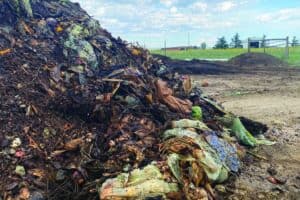Three El Paso County water district managers came together to brainstorm a long-term water solution for the county. The result is a concept they call The Loop.Amy Lathen, general manager, Cherokee Metropolitan District, said she met with managers from Woodmoor Water & Sanitation District No. 1 and Donala Water Sanitation District to discuss how to create a use/re-use water plan between northern and southern El Paso County. She said while looking at the map, they realized the area is literally a loop; hence, the name.Lathen said Cherokee Metro District already has miles of water line in the ground that could be used to provide water to other areas. Formed in 1957 to serve the Cimarron Hills neighborhood, CMD is also a Colorado Title 32 special district; serving water and wastewater to Shriever Air Force Base, plus providing wastewater for Meridian Ranch in Falcon.In 2011, CMD bought Denver Basin aquifer water rights from the Sundance Ranch in northern El Paso County. Lathen said they proceeded to build a water treatment plant on-site and installed a 17-mile water pipeline called the Cherokee Sundance Line, which travels from Hodgen and Black Forest roads, south to Marksheffel and Tamlin roads. ìSince that infrastructure is already in place and ready for use for the potential Loop plan, I think it would be a much better use for all of that infrastructure than the way itís currently being used to only deliver water into our Tamlin tank,î she said.The connection from the southern area (the Fountain Creek area) to the Tamlin tank still needs to be built, she said. But once that is complete, thousands of additional customers will be able to be served, particularly in the northern entities, by bringing water up from southern parts of El Paso County.All of the northern water districts use the Denver Basin; some even own surface water rights in southern El Paso County; but, at present, that water is not accessible, Lathen said. The use/re-use plan would take some of the pressure off the Denver Basin wells, plus take advantage of renewable water instead, she said. Other water districts or entities could also draft water off of that line and use some of the return flows in their own systems, which again takes pressure off the Denver Basin wells.ìThe bottom line is non-renewable Denver Basin water is already being produced, treated, collected and discharged,î Lathen said. ìThe Loop project would allow for the reuse of existing Denver Basin water resources plus access to renewable surface water rights that are currently inaccessible.ìFalcon area entities could benefit from this plan by having access to renewable water. They would have to choose to buy water from the system in some way, which could take pressure off of existing Denver Basin sources and introduce backup supplies for their systems.”†Dave Duran,†president of Division 2, Upper Black Squirrel Creek Groundwater Management District, attended the workshop presented to the county about The Loop. †He said his understanding from the discussion is that†the majority of the northern water entities would benefit from this plan if pursued.At this point, he†isnít aware of any eastern metropolitan districts that are partners in the project or how they would benefit.†ìI was excited at first because I thought maybe they had found water from another source,î he said. ìThen I found out they plan to use the water from Fountain Creek.î The creek basically consists of wastewater deposited there from all of the water districts in the area. Duran said, ìItís the ickiest of the ickiest water.î†He said he is curious about their plans to clean the creek water up and how they propose to use the credits.†ìI†will continue to keep an eye on what happens with The Loop and how it is handled,î Duran said.Lathen said an engineering firm is studying the situation to get a better assessment of what needs to be done as well as a cost study that is due toward the end of the year. The managers also approached the county for financial assistance because they have access to federal funds for this kind of project; they may also invite congressional senate discussions related to funding, she said.People should care about water issues because if nothing else, when water infrastructure costs go up, the expense gets passed along to businesses and housing, Lathen said. It costs about $2 million to drill one well in the Denver Basin. Lathen said itís also important to have access to long-term sustainable water and not deplete what we have. ìWater is game, set, match; nothing else matters. You have to have water,î she said.Lathen said she enjoys working with other districts to figure out how to pull all the water assets together. ìWe donít know all the answers, but itís good to speak openly with other districts,î she said. ìThere shouldnít be any political boundaries between the districts, because weíre all just trying to provide water and wastewater services for the long term.ìI really think we can do it. If we can make this work, weíre just a little piece in the puzzle. And if we can add that piece to the puzzle and help make it all come together, thatís a better use for everyone.î






